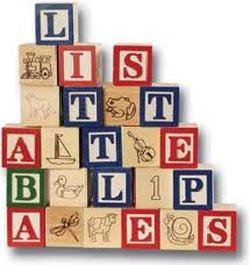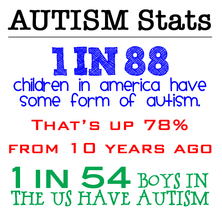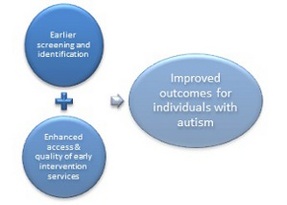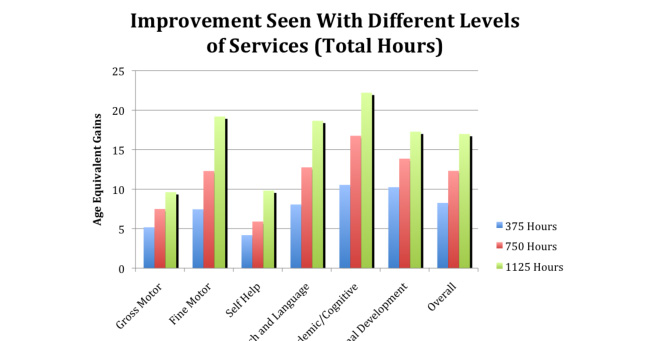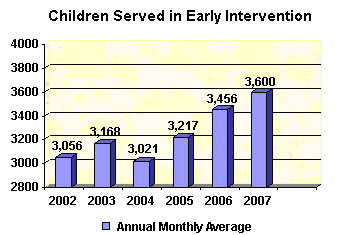Early Intervention
Applied Behavioral Analysis
for Children With Autism
|
Early Intervention or Applied Behavioral Analysis is a system of services that help babies and toddlers with developmental delays or disabilities. Early intervention focuses on helping eligible children learn the basic and brand-new skills that typically develop during the first three years of life. With Autism, it has been shown that early intervenion programs can lead to considerable gains in cognitive, social, emotional, and motor-functioning skills. There are many different types of Early Intervention including developmental programs, physical therapy, occupational therapy, and speech and language pathology. However, according to the Interagency Autism Coordinating Committee (see link below) there is no intervention approach that will benefit all children equally.
(Left) The "formula" for success for Autistic children and Early Intervention Programs
(Above) The Improvement Seen With Different Levels of Services (Below) Children Served in Early Intervention 2002-2007 |
|
|
|
Your browser does not support viewing this document. Click here to download the document.
Research Articles
Overcoming Challenges and Identifying A Consensus About Autism Intervention Programming - This article written by Carolyn .E. Stephens identifies seven critical program components that address some of the challenges associated with providing effective and efficient Autism Intervention programs. The programs components target a wide range of deficit areas in order to enable children with Autism to act more independently, have real choices in natural contexts, and appropriately communicate socially and academically.
Strategic Plan for Autism Spectrum Disorder - The Interagency Autism Coordinating Committee released this informational website with help from the U.S. Department of Health and Human Services most recently in 2012. The IACC Strategic Plan is organized around seven general topic areas that are comsumer-focused questions such as, "When should I be concerned?" "What types of strategies and interventions will help my child?" and "How can I understand what is happening?" Each question is supported by research and features relevant discussion throughout.
Early Intervention In Autism - This article discusses the available evidence from a variety of programs and studies that suggest that early intervention leads to better outcomes. As we have seen, a number of studies have demonstrated that children make greater gains when they enter a program at a younger age
Educating Children With Autism - This PDF offers discussion and conclusions for current diagnoses, assessment, and prevalence for children on the Autism Spectrum. It provides recommondations for families, goals for special educators, and discusses the characteristics of an effective intervention.
Effectiveness of Early Intervention - An analysis of the current state of our knowledge of the effectiveness of Early Intervention for at risk children
Strategies and Resources
Powerpoint for Early Intervention - This powerpoint created by Laurie Stephens allows you to quickly and easily follow the best practices of Early Intervention, why it may be helpful, and how to find the program that is best for your child.
Overview of Early Intervention - This website will provide you with a brief overview of Early Interventon, including what it is,, who is eligible, what is a developmental delay and how can you tell the difference, the evaluation and assessment process, and timeframes, and monitary concerns.
The Early Start Denver Model - The Early Start Denver Model (ESDM) is a comprehensive behavioral early intervention approach for children with Autism. The program encompasses a developmental curriculum that defines the skills to be taught at any given time and a set of teaching procedures used to deliver this content. It is not tied to a specific delivery setting, but can be delivered by therapy teams and/or parents in group programs or individual therapy sessions in either a clinic setting or the child’s home.
Educating Children With Autism - This PDF offers discussion and conclusions for current diagnoses, assessment, and prevalence for children on the Autism Spectrum. It provides recommondations for families, goals for special educators, and discusses the characteristics of an effective intervention.
